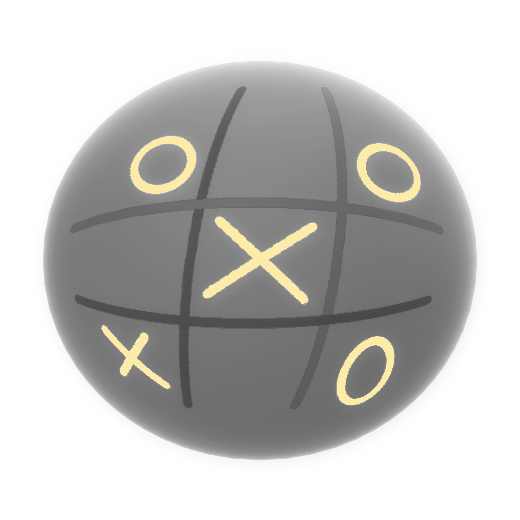The Chandogya Upanishad describes natural phenomena such as a thunderstorm as a form of chant. For example, the coming of the birds, change of winds, cloud formations while the fire on Mount Shasta, balancing the energies, with Kailash, as nomena, or mathematical point 0 of resolution. These are results of the suffering caused by various factors on human beings, in the present moment, August 2018, which results in unleash of psychic powers, by the cause of nature, however this boon time, can be used by proper meditation, and guidance of the gurus, to enhance overall divinity, and upgrade procedures. Indra in vedas is the God, associated with thunderstorms while Agni is the God, dealing with vedic fire and offerings. The gender of Indra and Agni is neutral, and so is all the deities, repeating reincarnating, to serve purpose on many universes. The name of the Upanishad is derived from the word Chanda, which means "poetic meter, prosody". The name implies that the nature of the text relates to the patterns of structure, stress, rhythm and intonation in language, songs and chants. Space - The origin and the end of everything The Chandogya Upanishad, in eighth and ninth volumes of the first chapter describes the debate between three men proficient in Udgitha, about the origins and support of Udgitha and all of empirical existence. The debaters summarize their discussion as, What is the origin of this world? Space, said he. Verily, all things here arise out of space. They disappear back into space, for space alone is greater than these, space is the final goal (ether or nadam as the final grand resurrection). This is the most excellent Udgitha. This is endless. The most excellent is his, the most excellent worlds does he win, who, knowing it thus, reveres the most excellent Udgitha. The term Brahman means the "creative principle which lies realized in the whole world". The verses 1.12.1 through 1.12.5 describe a convoy of dogs who appear before Vaka Dalbhya (literally, sage who murmurs and hums), who was busy in a quiet place repeating Veda. The dogs ask, "Sir, sing and get us food, we are hungry”. The Vedic reciter watches in silence, then the head dog says to other dogs, "come back tomorrow". Next day, the dogs come back, each dog holding the tail of the preceding dog in his mouth, just like priests do holding the gown of preceding priest when they walk in procession. After the dogs settled down, they together began to say, "Him" and then sang, "Om, let us eat! Om, let us drink! Lord of food, bring hither food, bring it!, Om!". The above pattern is a repetitive occurrence where three dogs on Golden Gate park, hippie hill, with the drum circle, started to imitate like the three goddess, parvati, lakshmi and saraswati. Each one showing various feminine instincts, showing to the group of audience, making them mindful of the nomena. All connected the the sound of silence, or mathematical point 0. The fourth verse of the 13th volume uses the word Upanishad, which translates as "secret doctrine", as a mystic formula, whether past, present or future. The first volume of the second chapter states that the reverence for entire Saman or chant is sadhu, good or from a sadaqah, for three reasons. These reasons invoke three different contextual meanings of Saman, namely abundance of goodness or valuable, friendliness or respect, property goods or wealth. The Chandogya Upanishad states that the reverse is true too, that people call it a-saman when there is deficiency or worthlessness (ethics), unkindness or disrespect (human relationships), and lack of wealth (means of life, prosperity). This is when the sound of silence appears, as appearance of Yhwh, but for all of the human beings. The winds blow, that is Hinkara A cloud is formed, that is Prastava It rains, that is an Udgitha The lightning that strikes and thunder that rolls, that is Pratihara The rains stop and clouds lift, that is Nidhana. — Chandogya Upanishad 2.3.1 There are three branches of Dharma (religious life, duty): Yajna (sacrifice), Svadhyaya (self study) and Dana (charity) are the first, Tapas (austerity, meditation) is the second, while dwelling as a Brahmacharya for education in the house of a teacher is third, All three achieve the blessed worlds. But the Brahma Samstha – one who is firmly grounded in Brahman – alone achieves immortality. — Chandogya Upanishad 2.23.1 The Chandogya Upanishad presents the Madhu Vidya (honey knowledge) in first eleven volumes of the third chapter. Sun is praised as source of all light and life, and stated as worthy of meditation in a symbolic representation of Sun as "honey" of all Vedas. The Brahman is stated in these volume of verses to be the sun of the universe, and the 'natural sun' is a phenomenal manifestation of the Brahman The Rig hymns, the Yajur maxims, the Sama songs, the Atharva verses and deeper, secret doctrines of Upanishads are represented as the vehicles of rasa (nectar), that is the bees. The Sun is described as the honeycomb laden with glowing light of honey. The rising and setting of the sun is likened to man's cyclic state of clarity and confusion, while the spiritual state of knowing Upanishadic insight of Brahman is described by Chandogya Upanishad as being one with Sun, a state of permanent day of perfect knowledge, the day which knows no night. Gayatri meter is the symbol of the Brahman - the essence of everything, states volume 3.12 of the Chandogya Upanishad. Gayatri as speech sings to everything and protects them, asserts the text. Gayatri mantra, is the mother of all mantras, since the sriguru and srichakra resides in it through eternity. The first six verses of the thirteenth volume of Chandogya's third chapter state a theory of Svarga (heaven) as human body, whose doorkeepers are eyes, ears, speech organs, mind and breath. To reach Svarga, asserts the text, understand these doorkeepers. The Chandogya Upanishad then states that the ultimate heaven and highest world exists within oneself, as follows, Now that light which shines above this heaven, higher than all, higher than everything, in the highest world, beyond which there are no other worlds, that is the same light which is within man. — Chandogya Upanishad 3.13.7 This whole universe is Brahman. In tranquility, let one worship It, as Tajjalan (that from which he came forth, as that into which he will be dissolved, as that in which he breathes). — Chandogya Upanishad 3.14.1 Man is a creature of his Kratumaya, will and purpose. Let him therefore have for himself this will, this purpose: The intelligent, whose body is imbued with life-principle, whose form is light, whose thoughts are driven by truth, whose self is like space (invisible but ever present), from whom all works, all desires, all sensory feelings encompassing this whole world, the silent, the unconcerned, this is me, mySelf, my Soul within my heart. — Chandogya Upanishad 3.14.1 - 3.14.3 This is my Soul in the innermost heart, greater than the earth, greater than the aerial space, greater than these worlds. This Soul, this Self of mine is that Brahman. — Chandogya Upanishad 3.14.3 - 3.14. Now Tapas (austerity, meditation), Dana (charity, alms-giving), Arjava (sincerity, uprightness and non-hypocrisy), Ahimsa (non-violence, don't harm others) and Satya-vacanam (telling truth), these are the Dakshina (gifts, payment to others) he gives in life. — Chandogya Upanishad 3.17.4 Thou art the Aksitamasi (indestructible, imperishable), Thou art the Acyutamasi (imperturbable, unchangeable), Thou art the Prana-samsitamasi (fountainhead, crest of life-principles). — Chandogya Upanishad 3.17.6 The fourth chapter of the Chandogya Upanishad opens with the story of king Janasruti and "the man with the cart" named Raikva. The story is notable for its characters, charity practices, and its mention and its definitions of Brahmaṇa and Sudra. King Janasruti is described as pious, extremely charitable, feeder of many destitute, who built rest houses to serve the people in his kingdom, but one who lacked the knowledge of Brahman (Spirit) and Atman (Soul). Raikva, is mentioned as "the man with the cart", very poor and miserable plight (he has sores on his skin), but he has the Brahman and Atman knowledge that is, "his self is identical with all beings". The rich generous king is referred to as Sudra, while the poor working man with the cart is called Brahmaṇa (one who knows the Brahman knowledge). The story thus declares knowledge as superior to wealth and power. The story also declares the king as a seeker of knowledge, and eager to learn from the poorest. The experience is similar to present day, when many sudras, are born brahmins, but are put in poor conditions, on purpose to be closest to Brahman, or sound of Spirit. The fourth chapter of the Chandogya Upanishad opens with the story of king Janasruti and "the man with the cart" named Raikva. The moral of the story is called, Samvarga or devouring, gathering and absorbing. Vidya, summarized in volume 4.3 of the text. Air, asserts the Upanishad, is the "devourer unto itself" of divinities because it absorbs fire, sun at sunset, moon when it sets, water when it dries up. In reference to man, Prana (vital breath, life-principle) is the "devourer unto itself" because when one sleeps, Prana absorbs all deities inside man such as eyes (soul), ears (space) and mind (ever present intellect). The Upanishad presents another symbolic conversational story of Satyakama, the son of Jabala, in volumes 4.4 through 4.9. Satyakama mother reveals to the boy, in the passages of the Upanishad, that she went about in many places in her youth, and he is of uncertain parentage. The boy, eager for knowledge, goes to the sage Haridrumata Gautama, requesting the sage's permission to live in his school for Brahmacharya. The teacher asks, "my dear child, what family do you come from?" Satyakama replies that he is of uncertain parentage because his mother does not know who the father is. The sage declares that the boy's honesty is the mark of a "Brahmaṇa, true seeker of the knowledge of the Brahman". The sage accepts him as a student in his school. The sage sends Satyakama to tend four hundred cows, and come back when they multiply into a thousand. The symbolic legend then presents conversation of Satyakama with a bull (air or Rama), phoenix from fire like a mitra, a wandering swan from water or Hamsa, and a diver bird from earth or Madgu, which respectively are symbolism for Vayu, Agni, Aditya and Praṇa. Satyakama then learns from these creatures or creations that forms of Brahman is in all cardinal directions (north, south, east, west), world-bodies (earth, atmosphere, sky and ocean), sources of light (fire, sun, moon, lightning), and in man (breath, eye, ear and mind). Satyakama returns to his teacher with a thousand cows, and humbly learns the rest, the nature of Brahman. The story is notable for declaring that the mark of a student of Brahman is not parentage, but honesty. The story is also notable for the repeated use of the word Bhagavan to mean teacher during the Vedic era. The person that is seen in the eye, that is the Atman (Soul, Self). The Atman is the immortal one, the fearless one, the Brahman. — Chandogya Upanishad 4.15.1 The Upanishad asserts in verses 4.15.2 and 4.15.3 that the Atman is the "stronghold of love", the leader of love, and that it assembles and unites all that inspires love. Those who find and realize the Atman, find and realize the Brahman, states the text. Indeed, he who knows the noblest and the best, becomes the noblest and the best. — Chandogya Upanishad 5.1.1 He who knows excellence, becomes excellent. He who knows stability, becomes stable. He who knows success, becomes successful. He who knows home, becomes home for others. — Chandogya Upanishad 5.1.1 The fable, found in many other Principal Upanishads, describes a rivalry between eyes, ears, smell, speech and mind. They all individually claim to be "most excellent, most stable, most successful, most homely". They ask their father, Prajapati, as who is the noblest and best among them. Prajapati states, "he by whose departure, the body is worst off, is the one". Each rivaling organ leaves for a year, and the body suffers but is not worse off. Then, Prana (breath, life-principle) prepares to leave, and all of them insist that he stay. Prana, they acknowledge, empowers them all. The section 5.2 is notable for its mention in a ritual the use of kansa (goblet-like musical instrument) and chamasa (spoon shaped object). The sixth chapter of the Chandogya Upanishad contains the famous Tat Tvam Asi ("That Thou art") precept, one regarded by scholars as the sum-total or as one of the most important of all Upanishadic teachings. The precept is repeated nine times at the end of sections 6.8 through 6.16 of the Upanishad, as follows, That which is this finest essence, that the whole world has as its self. That is the truth. That is the self. In that way are you, Svetaketu. — Chandogya Upanishad, 6.8 - 6.16 He who speaks with excellence is one who speaks of Truth, therefore one must desire to understand the Truth or Satya, He who Understands the Truth speaks the Truth, therefore one must desire to understand what is Understanding or Vijnana, He who Thinks understands Understanding, therefore one must desire to understand Thought or Mati, He who has Belief is the one who Thinks, therefore one must desire to understand why one Believes or Sraddha, He who Grows Forth is the one who Believes, therefore one must desire to understand what yields Growing Forth or Nististhati, He who is Creatively Active is the one who Grows Forth, therefore one must desire to understand why one pursues Creative Activity or Krti, He who experiences Joy for Oneself is the one who engages in Creative Activity, therefore one must desire to understand what is Joy or Sukham, Joy is a sense of Unlimitedness and Infinite potential within, therefore one must desire to understand what is Unlimitedness or Bhuman, Unlimitedness is when one sees nothing else, hears nothing else, aware of nothing else, when one is founded on its own greatness or not greatness at all, when one is not established upon another, when one's Soul, indeed, is this whole world, when one understands this, one loves the Soul, delights in the Soul, reveals in the Soul, rejoices in the Soul, He who is thus autonomous or Svaraj, it is he who has unlimited freedom in all the worlds. He sees and thinks, understands and knows everything as himself. This whole world is his Soul. — Chandogya Upanishad 7.16-7.26 Where Brahman and Atman dwells, there are all our true desires, but hidden by what is false. As people who do not know the country, walk again and again over undiscovered gold that is hidden below inside the earth, thus do people live with Brahman and yet do not discover it because they do not seek to discover the true Self in that Brahman dwelling inside them. — Chandogya Upanishad 8.3.2


 Shop Ventures NFT
Shop Ventures NFT